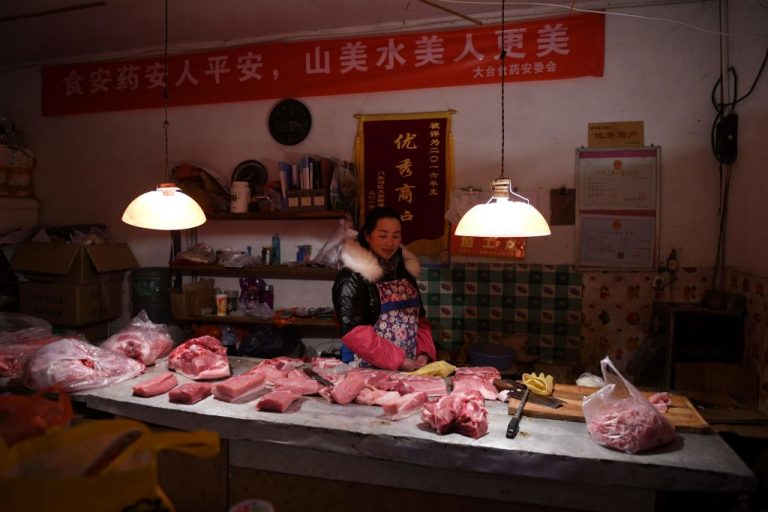Pork prices in China could not cover overhead expenses from June to September of this year, Chinese farmers say. A farmer in Shandong Province said he sold a pig for 3,000 yuan (approximately US$470) last year but only 2,000 yuan this year.
On Nov. 4, Chinese agriculture official Chen Guanghua said that the nation’s stock of breeding sows was still 6 percent over the normal quantity.
“I hope people will buy and eat more pork. So they can get more nutrition and also help farmers overcome the difficulties of selling pigs this year,” Chen, who is deputy director for the Bureau of Animal Husbandry and Veterinary in Rural Affairs, said at a press conference.
Mr. Wang, a farmer from Shandong, an eastern Chinese province, told the Chinese-language edition of The Epoch Times on Oct. 29 that hundreds of his pigs died last year as a result of African swine fever. An estimated 500,000 to 600,000 yuan were lost as a result (approximately $78,250–$93,900.)
He said that the lowest price pork was being sold for was 5 yuan (approximately $0.78) per jin (a Chinese unit of weight equal to 500 grams or approximately 1.1 pounds.)
“I lost a lot of money then. Pork is now selling for about 7-8 yuan per jin. At least I’m not losing money now,” he said.
Success
You are now signed up for our newsletter
Success
Check your email to complete sign up
Pork prices in the market varied across different regions of China.
Ms. Li, a resident in Hangzhou, the capital of Zhejiang Province, told the Epoch Times on Nov. 4, “Pork is selling for 20 some yuan ($3.13) per jin.” A resident in Bengbu city said that pork was more inexpensive, but pork ribs were expensive, selling for about 40 plus yuan ($6.26) per jin. A local buyer in Anshan city of Liaoning, the largest and wealthiest province of Northeast China, said that pork was 14 yuan ($2.19) per jin now, compared to 12 yuan ($1.88) per jin before.
From shortage to excess
Mr. Wang said pork prices had dropped due to an outbreak of African swine fever in 2018. He explained that after nearly half of China’s roughly 400 million pigs died nationwide within two years, many farmers began to breed more pigs as prices and demand surged. As a result, there is an excess of pigs this year, he said.
Flora Chang, associate director at S&P Global Ratings said, “the high price lured large pork producers to produce more…. They borrowed aggressively to fund expansion,” noting that due to the coronavirus pandemic in 2020, financing was easily available.
“Farmers can do nothing about the price volatility,” said Mr. Wang.
State-run conglomerates were also controlling the prices, he said, adding that some large listed hog companies even kept pigs from being sold in order to control prices. Seventy percent of the nation’s pigs are in the hands of these listed companies.
Alina Wang contributed to this report.














